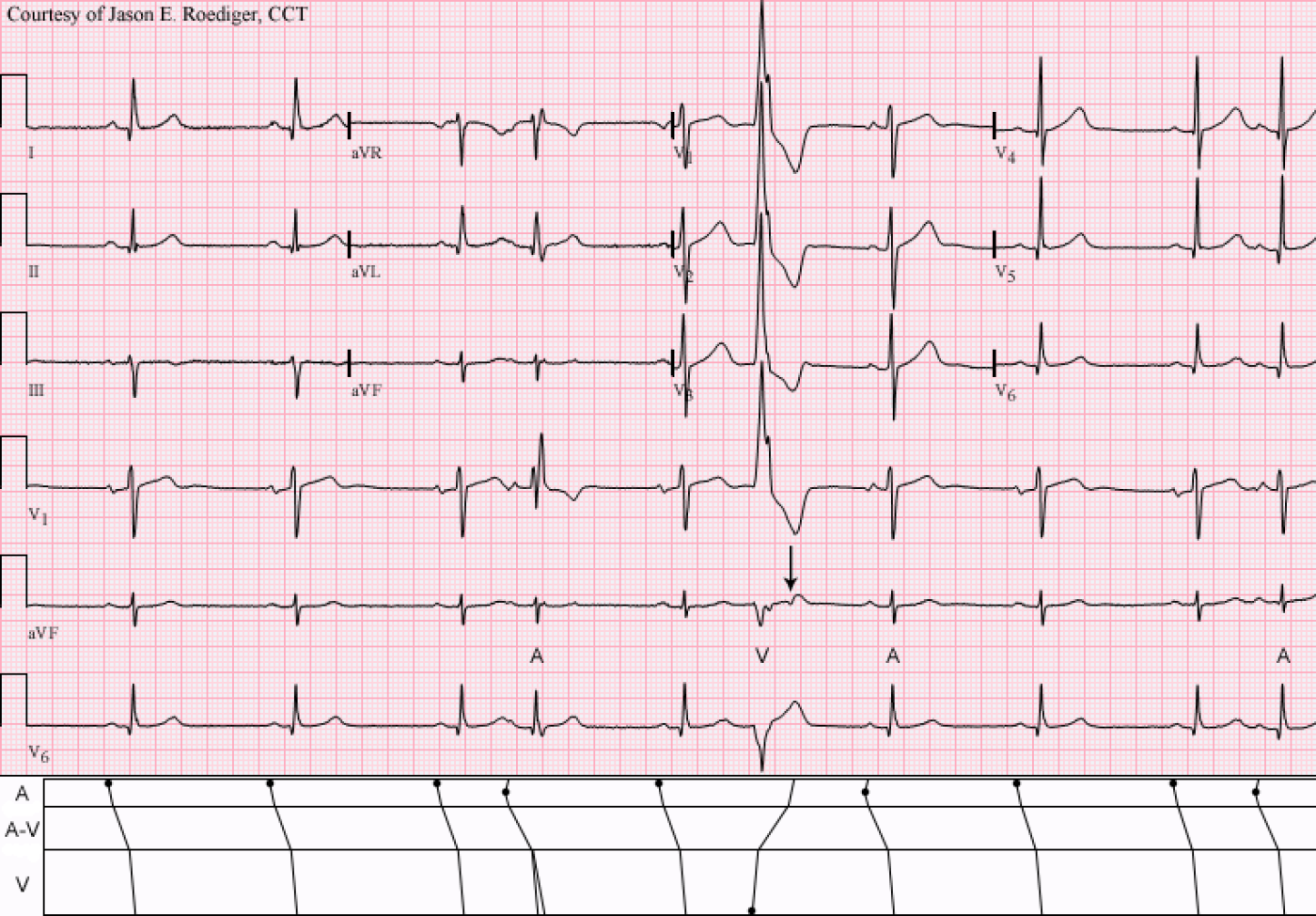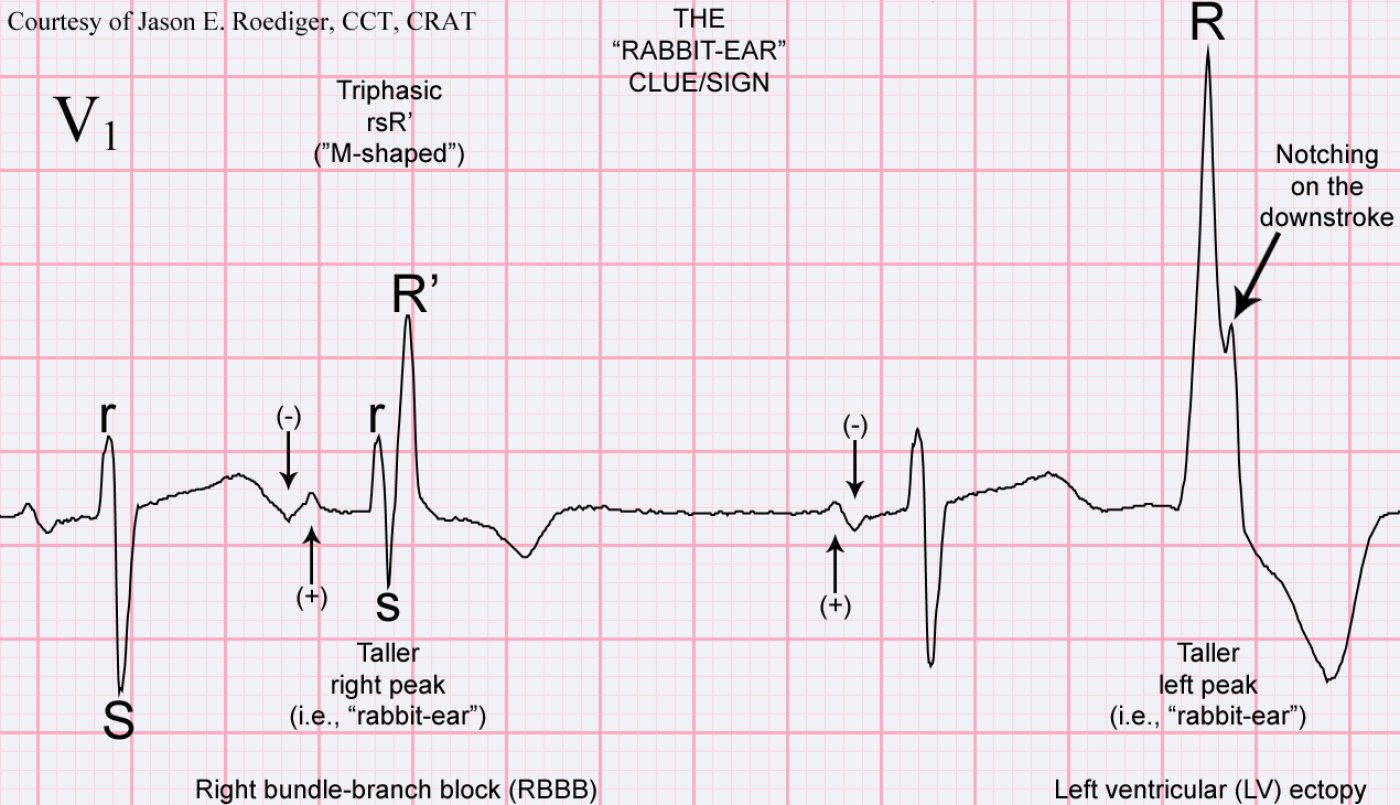Submitted by jer5150 on Sat, 12/22/2012 - 14:08
I performed this ECG earlier this year in an outpatient clinic.
Patient's clinical data: 85-year-old white man; asymptomatic.
Questions?
(1.) What rhythm is this tracing showing?
(2.) What clue/sign is used to differentiate between the two anomalous beats (i.e., 4th and 6th beats). HINT: It's named after a part of a certain animal's anatomy.
** *** NOTE *** **: For the sake of determining QRS morphology and axis, I've also included a simultaneous single-channel rhythm strip of Lead I directly below the 12-lead ECG.
Rate this content:
-

- jer5150's blog
- Log in or register to post comments
All our content is FREE & COPYRIGHT FREE for non-commercial use
Please be courteous and leave any watermark or author attribution on content you reproduce.





Comments
rabbit's ears?
i think this is sinus rhythm with an atrial prenmature beat showing RBBB aberrant conduction (4th beat) and a ventricular premature beat (beat 6) There is also an atrial premtaure beat at the end of the ECG, this time with normal conduction, probably because the slightly longer coupling interval allows the RBB time to recover before the atrial impulse reaches it. The VPB has an RBBB-ish apeparance but it is not a typical RBBB pattern because the 1st R wave is taller than the second. I think this is something to do with rabbits' ears but I can't remember what the connection is! Also, of course, the 1st anomalous QRS is preceded by a P wave, wheras the 2nd one isn't, and this helps to distinguish between their different origins.
Dave R
PVC vs Aberrant PACs: Using Rabbit Ears & Other Things ...
I'll add to discussion by Jason - and Dave Richley's excellent answer. Additional points include the following:
GREAT example by Jason of some essential points in the distinction between ventricular ectopy and aberrant conduction.
Ken Grauer, MD www.kg-ekgpress.com [email protected]